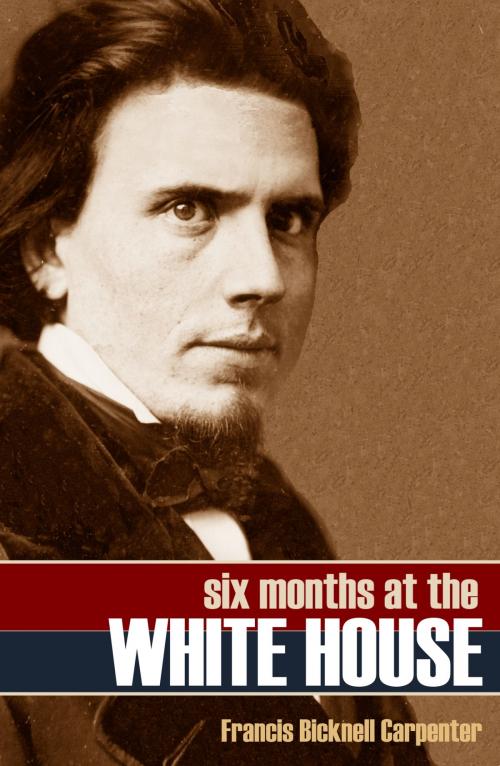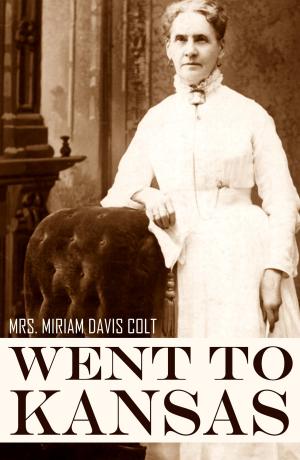Six Months at the White House
Nonfiction, History, Americas, United States, Civil War Period (1850-1877), Social & Cultural Studies, Political Science, Politics, History & Theory, Biography & Memoir, Historical| Author: | Francis Bicknell Carpenter | ISBN: | 1230001448764 |
| Publisher: | BIG BYTE BOOKS | Publication: | November 30, 2016 |
| Imprint: | Language: | English |
| Author: | Francis Bicknell Carpenter |
| ISBN: | 1230001448764 |
| Publisher: | BIG BYTE BOOKS |
| Publication: | November 30, 2016 |
| Imprint: | |
| Language: | English |
In February of 1864, Francis Carpenter left New York for the White House to fulfill a dream born of the previous year's issuance of the Emancipation Proclamation. With Lincoln's enthusiastic support, Carpenter would paint the now-famous life-sized portrait of the President and his Cabinet depicting the first reading of the Proclamation.
For six months, Carpenter had almost daily access to Lincoln, often sketching quietly in the President's office while Lincoln worked and met with visitors. He would see Lincoln in triumph, in sorrow, in the company of important men, and meeting with common citizens.
From this extraordinary access, Carpenter observed a man he came to regard as uniquely suited for the overwhelming task of guiding the nation through a war that threatened to rip it apart. He saw and appreciated Lincoln's wisdom, intellect, humanity, and wit. He came to love the man.
Carpenter was able to wander freely about the White House during his time there in 1864. He chatted with visitors, family, and Cabinet members, as well as members of Congress. He saw Lincoln at his most relaxed and during times of tension.
In addition to his reading of Lincoln biographies after the President's death, Carpenter was privy to many unique stories from Lincoln friends and intimates. If you're a Lincoln student, you'll recognize well-known stories but many are unique here.
(Expanded, Annotated)
Every memoir of the American Civil War provides us with another view of the catastrophe that changed the country forever.
For the first time, this long out-of-print volume is available as an affordable, well-formatted book for e-readers and smartphones.
Be sure to LOOK INSIDE by clicking the cover above or download a sample.
In February of 1864, Francis Carpenter left New York for the White House to fulfill a dream born of the previous year's issuance of the Emancipation Proclamation. With Lincoln's enthusiastic support, Carpenter would paint the now-famous life-sized portrait of the President and his Cabinet depicting the first reading of the Proclamation.
For six months, Carpenter had almost daily access to Lincoln, often sketching quietly in the President's office while Lincoln worked and met with visitors. He would see Lincoln in triumph, in sorrow, in the company of important men, and meeting with common citizens.
From this extraordinary access, Carpenter observed a man he came to regard as uniquely suited for the overwhelming task of guiding the nation through a war that threatened to rip it apart. He saw and appreciated Lincoln's wisdom, intellect, humanity, and wit. He came to love the man.
Carpenter was able to wander freely about the White House during his time there in 1864. He chatted with visitors, family, and Cabinet members, as well as members of Congress. He saw Lincoln at his most relaxed and during times of tension.
In addition to his reading of Lincoln biographies after the President's death, Carpenter was privy to many unique stories from Lincoln friends and intimates. If you're a Lincoln student, you'll recognize well-known stories but many are unique here.
(Expanded, Annotated)
Every memoir of the American Civil War provides us with another view of the catastrophe that changed the country forever.
For the first time, this long out-of-print volume is available as an affordable, well-formatted book for e-readers and smartphones.
Be sure to LOOK INSIDE by clicking the cover above or download a sample.















